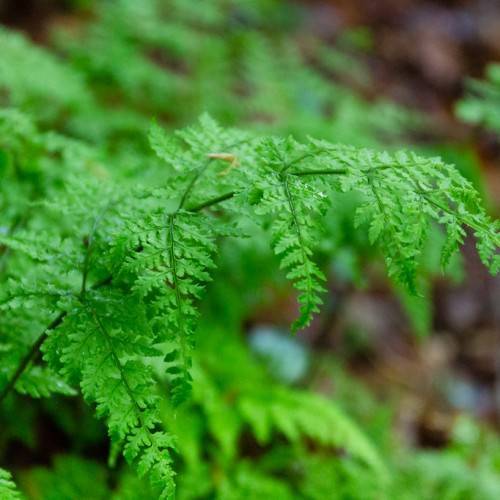
buckler fern
Dryopteris complexa
Cycle:
Perennial
Watering:
Average
Hardiness Zone:
5 - 9
Flowers:
Flowers
Sun:
Part shade,full shade
Leaf:
Yes
Growth Rate:
Low
Maintenance:
Low
watering
Watering a buckler fern (Dryopteris complexa) requires consistent moisture. The plant prefers slightly moist soil with frequent misting, although it will tolerate a few days of slightly dryer conditions. During the winter, water when the top 2 inches (5 centimeters) of soil becomes dry, and water thoroughly. In the summer, water regularly, allowing the top inch (2.5 centimeters) of soil to dry out between waterings. Additionally, mist the plant daily with room-temperature water to increase humidity.
sunlight
Buckler Ferns prefer mostly dappled sunlight throughout the day and should be shielded from full sun exposure. If planted outdoors, they should be placed in a partially shaded area of the garden. For optimal growth, they need between 4-6 hours of bright, indirect sunlight every day. However, they can tolerate some direct sunlight, especially in the morning hours. During the summer, it is best to place the plant in an area that receives filtered sunlight in the afternoon rather than direct sunlight during the noon or mid-afternoon hours when the sun is strongest. Additionally, Buckler Ferns do not do well in full shade, as they need some bright light to thrive.
pruning
Buckler fern, scientifically known as Dryopteris complexa, should be pruned in early spring before new growth appears. Pruning will help to maintain the shape of the plant and control its size. Care should be taken to not cut back too much as this will reduce the number of leaves the plant produces in the season. Pruning should be done by selectively cutting off fronds that are long, dead, or discolored. If the fern becomes overgrown, it is best to prune it back to 1/3rd of its original size. This will reduce the stress placed on the plant. It is important not to prune the growing tips of the fern as this will reduce the number of new fronds that develop throughout the summer.
